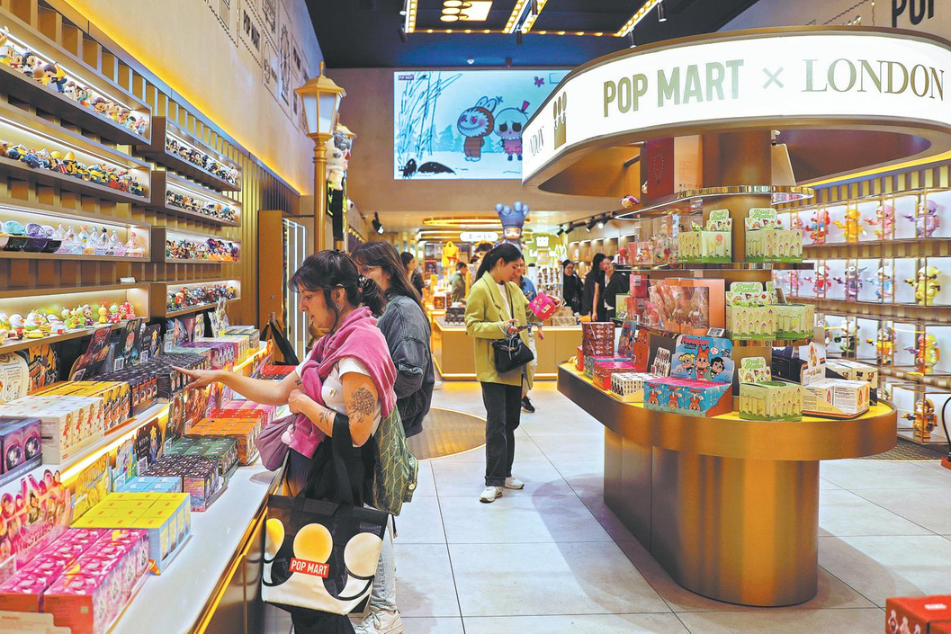3-way FTA talks back on agenda
China-Japan-S. Korea pact may hinge on navigating geopolitical challenges
By Wang Keju | China Daily | Updated: 2024-06-27 09:21

After a hiatus of over four years, negotiations for the China-Japan-South Korea Free Trade Agreement have returned to the table, with the focus on a higher level of liberalization that goes beyond the Regional Comprehensive Economic Partnership agreement, particularly in areas such as automobiles and key components, analysts said.
However, closing the three-way trade pact might not be an easy feat as the three nations will have to navigate the complexities and challenges stemming from geopolitical tensions and other issues, they cautioned.
Negotiations for the FTA have stalled since 2019, but the elusive trade deal was cast into the spotlight again in late May at a trilateral summit — the first in four years — attended by leaders from China, Japan, and South Korea in Seoul.
"We will keep discussions for speeding up negotiations for a trilateral free trade agreement," they said in a joint statement after the summit, stressing a deal that would be "free, fair, comprehensive, high-quality, and beneficial for all."
The FTA, first proposed in 2002, represents one of the most substantial economic partnerships China engages in, with a high proportion of China's foreign trade involved. The negotiations began in November 2012 and lasted for 16 rounds until 2019.
Trade between the three countries has surged from some $130 billion in 1999 to nearly $800 billion in 2022, with China emerging as the top trading partner for both Japan and South Korea.
China is the primary source of imports for Japan and South Korea, and stands as the largest export destination for South Korea and the second largest for Japan.
While China and South Korea signed a bilateral FTA in 2015, no FTAs have been reached between China and Japan or between Japan and South Korea, said Cui Fan, a professor at the University of International Business and Economics in Beijing.
This has resulted in a trade ratio within the China-Japan-South Korea region that has struggled to surpass 20 percent, significantly lower than the 64 percent within the European Union, 50 percent within the region under the North American Free Trade Agreement, and 24 percent within the Association of Southeast Asian Nations, Cui added.
The RCEP pact has been fully implemented for a year, heralding the first-ever free trade agreement in which China, Japan, and South Korea participate. Alongside these three nations, the mega trade pact includes the 10 member states of the ASEAN, as well as Australia and New Zealand.
The three nations, during the 14th round of negotiations in 2018, proposed to build upon the achievements of the RCEP and explore ways to further enhance the levels of trade and investment liberalization within the region.
The ongoing negotiations for a trilateral trade agreement are primarily centered around surpassing the levels of tariffs and rules established by the RCEP, said Ni Yueju, a research fellow at the Chinese Academy of Social Sciences' Institute of World Economics and Politics.
Under the RCEP framework, 86 percent of products exported from Japan to China and 88 percent of products exported from China to Japan will eventually attract zero tariffs, Ni said.
While this represents a substantial improvement compared to previous levels, the figures still fall short of the Comprehensive and Progressive Trans-Pacific Partnership, which boasts a 98 percent zero-tariff ratio, and also fall behind the 95 percent zero-tariff ratio achieved under the China-ASEAN Free Trade Agreement, Ni added.
Additionally, the negotiations aim to address areas that RCEP does not cover, such as the automotive sector and certain automotive components, Ni said, adding that the agricultural sector will emerge as a sensitive area due to the strong agricultural lobbies in Japan and South Korea cautious about opening their domestic markets to increased competition.
The high degree of interconnectivity within the industrial chains and strong economic complementarity among China, Japan, and South Korea is paving the way for a three-way trade pact, said He Yadong, spokesman for the Ministry of Commerce.
Once achieved, this agreement is expected to further expand market openness, reduce trade barriers, enhance trade and investment, and improve the business environment, bringing tangible benefits to businesses and people across the three nations, He added.
That said, in recent years, competition between China and Japan, as well as South Korea, has intensified, particularly in the fields of high-end manufacturing and advanced technology. Negotiations in these areas involve the core interests of each country, making coordination more challenging, analysts said.
The global and regional geopolitical landscape, including factors such as the shifting dynamics of power, the China-US trade conflict, the impact of the COVID-19 pandemic, and US restrictions on Chinese technology, have all contributed to the challenges faced in reaching a consensus in the negotiations, said Ni.
























